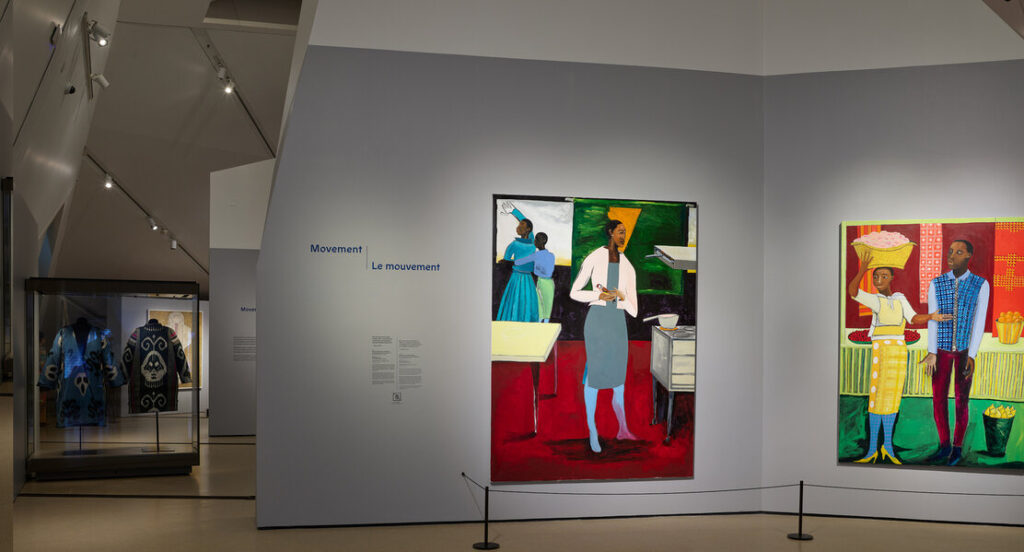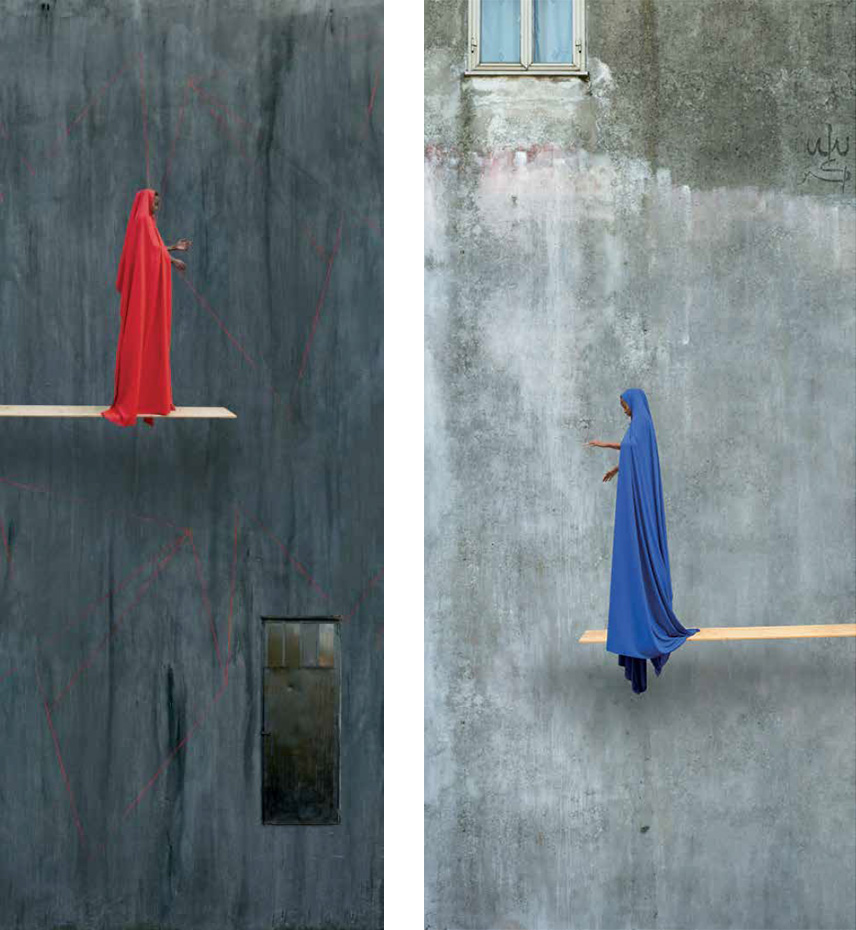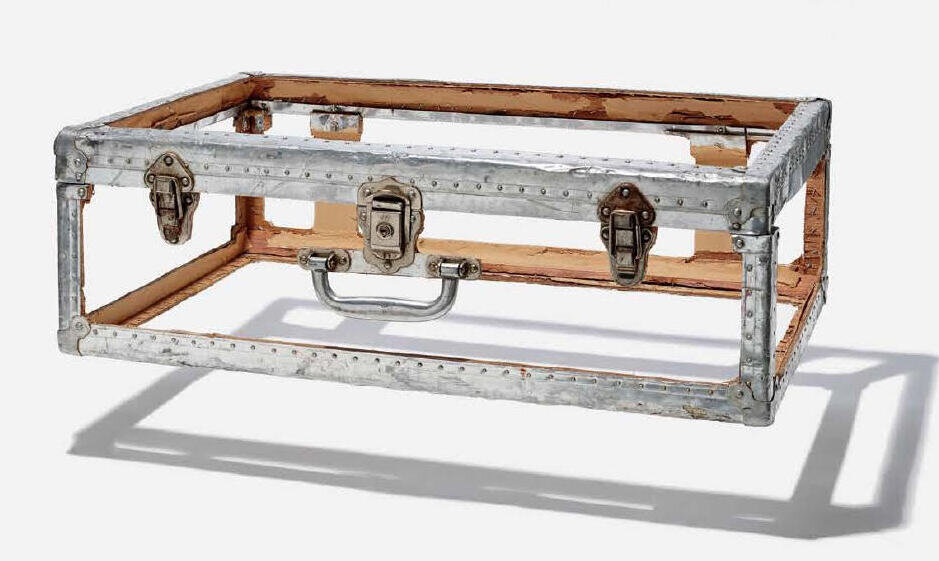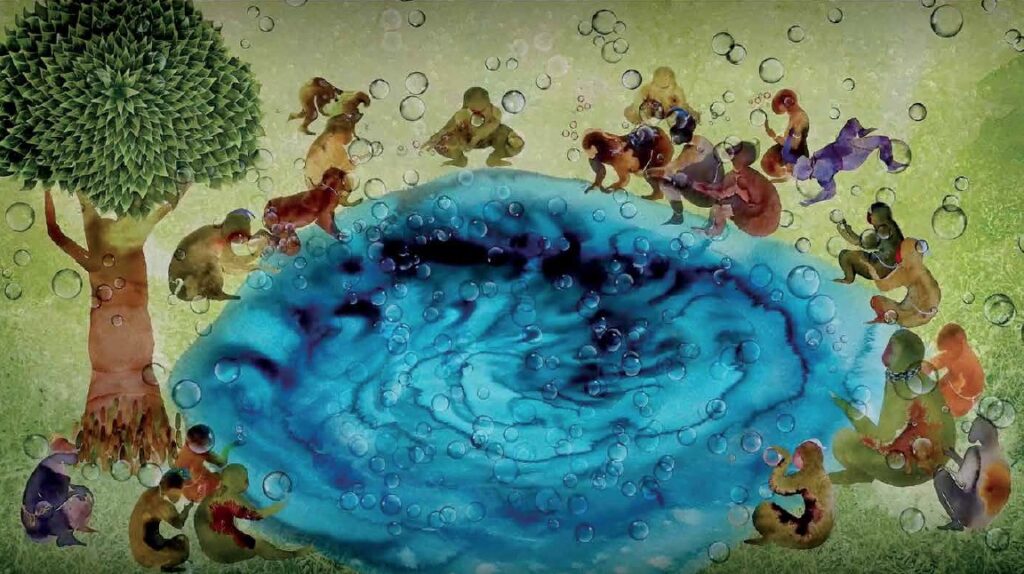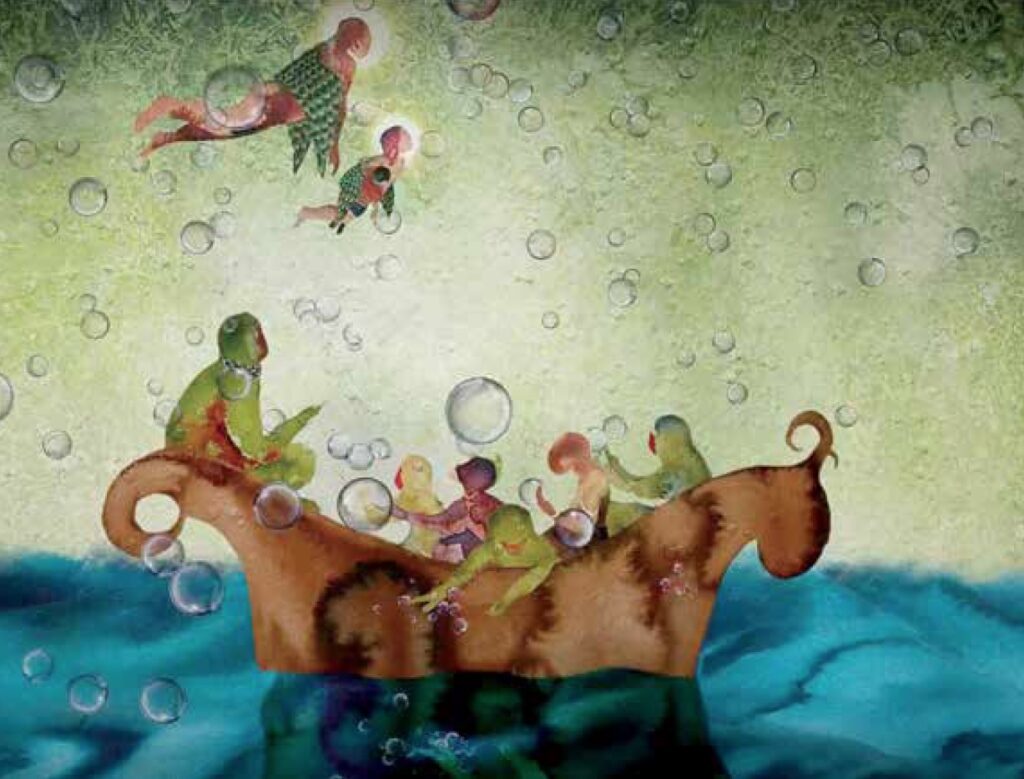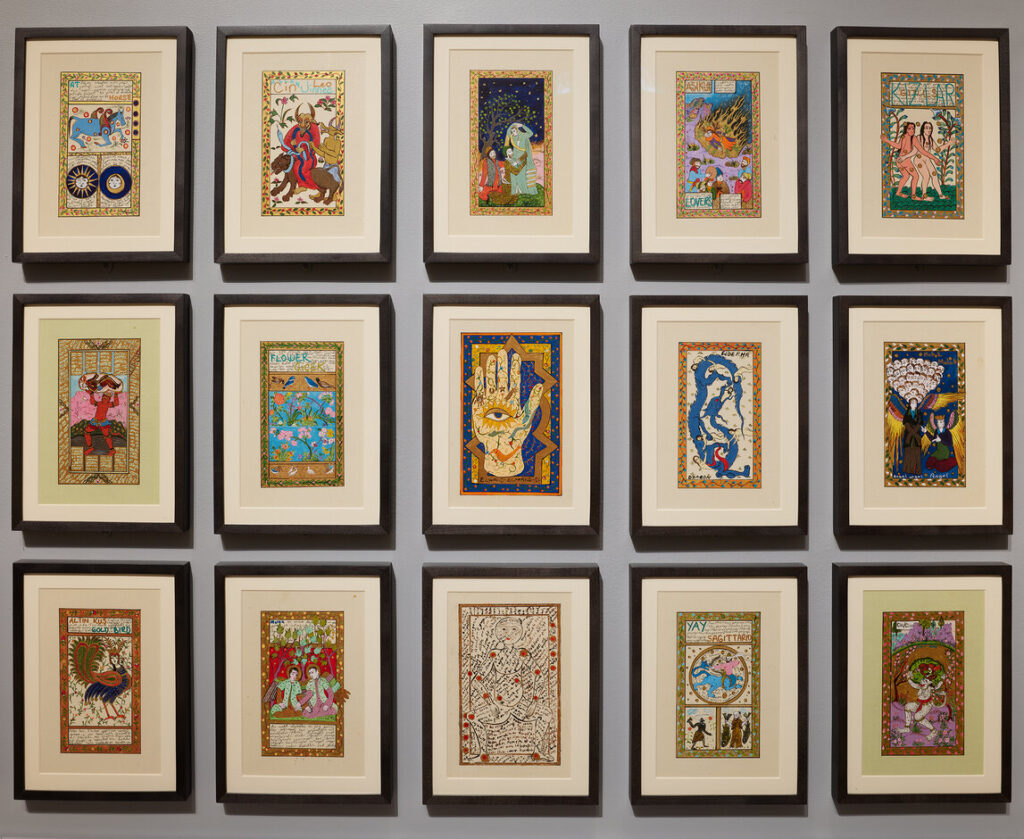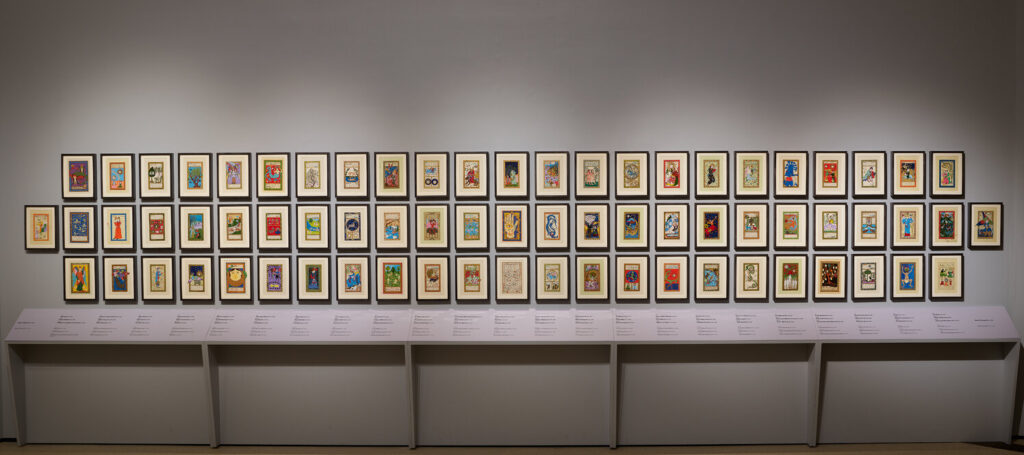Being and Belonging: Contemporary Women Artists from the Islamic World and Beyond
Away from racial biases and political circuses, 25 immigrant female artists from the Islamic world were asked to present their art at the Royal Ontario Museum this year. They are from the Middle East, Africa and Southeast Asia, but not all of them identify themselves as Muslim.
Although these artists are from different countries and continents, they have so many things in common. Their homelands were taken away from them. Colonialism, social instability and political turmoil forced them to leave their countries. They were threatened by patriarchy, misogyny, injustice and discrimination, but they were not defeated. You can see their resilience, bravery and strength perfectly illustrated in their arts. They are taboo breakers. They challenge the stereotypical image of themselves. They are storytellers, each in their own unique way. It’s all out there sitting on the weirdly angled walls of the ROM waiting for you to observe and enjoy them.
Installation view of Being and Belonging
Maïmouna Guerresi is an Italian-Senegalese artist born in 1951 in Italy. A multimedia artist who expresses herself through photography, sculpture, video and installation. She mentions Sufism (Islamic mysticism) as a constant source of inspiration for her work. Black Muslim women’s stories are narrated throughout her work. “The image of the African Muslim woman is placed in a dimension where space is not determined by either time or history” states the artist.
The Trampoline photographs, Blue and Red, are from the Aisha in Wonderland series (2015-2016). They are mesmerizing, with two large paintings, each portraying a woman, standing on a thin diving board. The backgrounds are gray which intensifies the red and blue colour of their hijabs. One figure has moved above a rusted closed iron door, the other one is ascending towards a window. Serenity is the first thing that comes to mind. Calm faces, eyes looking down, avoiding any challenge. Mathematically calculated hand movements keep their balance. Both women have safely located themselves between their surroundings. There are no signs of struggle, resistance or fight. An acceptable amount of skin and hair is showing; perhaps what the religion, the ‘norm’ and the law agree on. Fragility is visually tangible, as well as the power of inner strength. One little miscalculation, one small mistake might cause them to fall. Behind the rusted iron door perhaps. They are matriarchs holding the lanterns, walking towards the future, showing the path.
Maïmouna Guerresi, Blue Trampoline and Red Trampoline, 2016, Lambda prints mounted on aluminum, 200 x 90.82 cm and 200 x 82.5 cm. ©Maïmouna Guerresi. Courtesy of Mariane Ibrahim.
Sama Alshaibi was born in Iraq in 1973 to an Iraqi father and a Palestinian mother. She fled Iraq, during the Iran-Iraq War in 1981 and lived in Saudi Arabia, UAE and Jordan before moving the United States in 1986. Sama created An Act of Possession in 2019 to shed light on the war and dislocation of Palestinians since 1948. She wrote “I want my actual homeland, not the multi-generational inheritance of displacement”.
The Suitcase can be a symbol of change or dislocation if change is forced upon you. It can also embody the day your ordinary life turned upside down. You can’t believe that the time came and you had to leave. You put some of your belongings in a suitcase and left the rest behind. And then … that one last look! Would you ever see the people and belongings you had to leave behind again? You run, and run, as fast as you can, as far you as you are allowed to, carrying one little suitcase like a part of your body. These are all of your belongings now. Then you stop somewhere without a home, a job, or an identity. They are all taken away from you. Your clothes don’t keep you warm anymore. Your documents can’t put a roof over your head. Your money is worthless. You stare at your suitcase and the reality hits you: you carried nothingness.
Sama Alshaibi, An Act of Possession, 2019, aluminium, plywood, and paper, 67.3 x 43.2 x 21.6 cm. Courtesy of Sama Alshaibi
Shiva Ahmadi, is an Iranian-American artist, born in 1975 in Iran. She moved to the US in 1998 after witnessing the Iranian Revolution and Iran-Iraq war in the 80s. She currently works as Associate Professor of Art at the University of California, Davis. Shiva created the animation Ascend in 2017 focusing on Syrian refugees who lost their lives when forced to flee their country. Shiva says “My work is a response to current world issues, which all stem from corrupt power and dictatorship”.
The animation is calm and playful, featuring young and adult figures playing with bubbles. The colors are vibrant green and blue with a touch of warm brown. It must be a hot summer day. The gentle bouncing movement of bubbles is hypnotizing. The tranquility of dreams and fantasy circulate in your mind. But you can’t fool yourself. Considering the region, something will happen. And it does. One of the bubbles turns into a little bomb, the other one into a grenade. Any second it can explode. And it does. Sorrow sinks in your heart. Aylan Kurdi’s lifeless little body shows up. And suddenly it hits you. The bubbles are not playful anymore, they became scary and they kill people. They destroy the parents’ dream of a peaceful life for their children. The next scene starts with different figures sitting in a boat playing with bubbles. Another hot summer day. But you can’t fool yourself, you know what happens next.
Stills from Shiva Ahmadi, Ascend, 2017, single-channel video animation with sound, 6:48 mins. Courtesy of Haines Gallery, San Francisco, and the artist.
Canan is a Turkish-Kurdish feminist-activist artist born in 1970 in Turkey. Canan created 71 small paintings in 2020. The inspiration comes from the Falname (Fortune telling) book which was used by fortune-tellers in Iran, India and Turkey during the 16th and 17th centuries. That is why the paintings look like tarot cards. You can find them all sitting next to each other covering the whole wall at this exhibition, ready to separate you from real, ordinary life for a few moments. She explains “People over the centuries have turned to fortune-telling and astrology to find hope in times of despair.”
The paintings are dazzling, with bright colours, under the spotlights, and hard to ignore. They immediately lead you from the material world into the mysterious, mythical, symbolic and magical world of fortune telling, crystal balls and tarot cards created by the artist. Images include a prince on a white horse fighting with dragons, crossing rivers and passing high mountains for the sake of love; a woman combing her long silky black hair in a rose garden; and fairies making wishes that come true. Figures half human, half animal symbolize love, power and victory. The human, animal and natural worlds are intertwined. Some picture a world perfectly in harmony, while others depict chaos. Some show people praying to the moon, the sun and the stars with their hands held up to the sky. Pomegranates, apples, tulips and daisies all have meaning, symbolizing important elements in eastern cultures. Red apple is health, a yellow one predicts illness. Animals are symbolic too. There is always something about cats and crows, because of their association with evil. Cats were taboo in Persia and crows are the harbingers of bad things, even death. Everyone wants to see a goldfish in their dreams. If only we had the power to choose.
Canan, Falname series of 71 paintings, 2023. Each ink, opaque watercolour, gold paint, and pencil on handmade paper, 24 x 16.5 cm.
The exhibition’s theme is power, space and movement. Such a trio of complex phenomenon! Each single word is loaded with layers and layers of pain, laughter, nostalgia, hope, challenge, failure and success. What makes the difference is the way those emotions are felt and expressed in the magical kaleidoscope of different languages, cultures, religions and histories. Hafez, the famous Persian poet, describes love as ‘only one word,’ however you won’t hear one love story twice he says. And that’s also the beauty of this exhibition.
Shirin Kabiri
Images are courtesy of the ROM.
*Exhibition information: Being and Belonging / Group Exhibition, July 1, 2023 – January 7, 2024, Royal Ontario Museum, Level 4, Roloff Beny Gallery, 100 Queen’s Park, Toronto. Museum hours: Tue – Sun 10 am – 5:30 pm.

